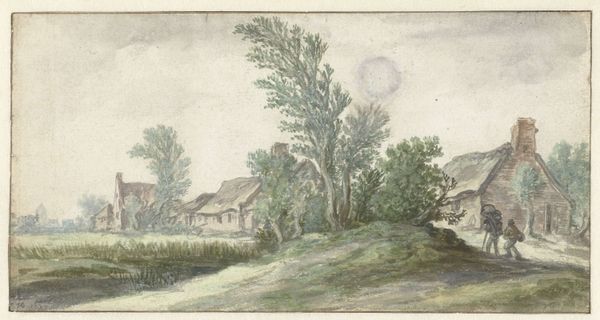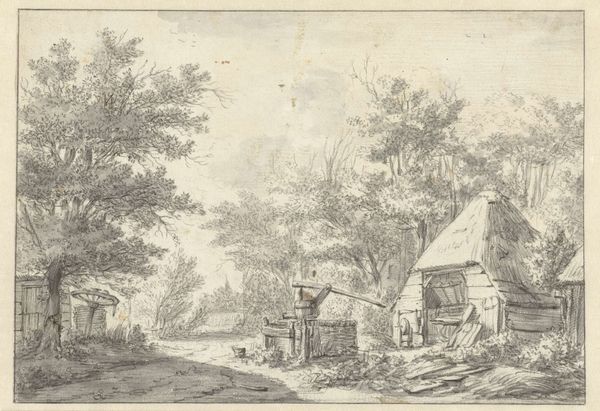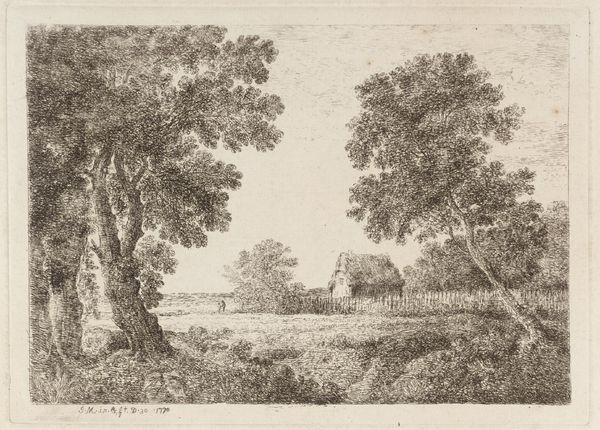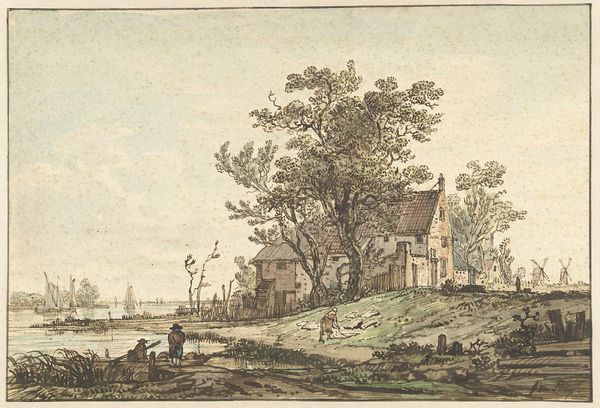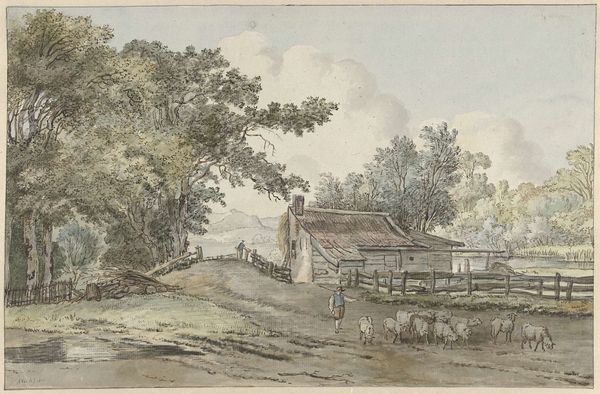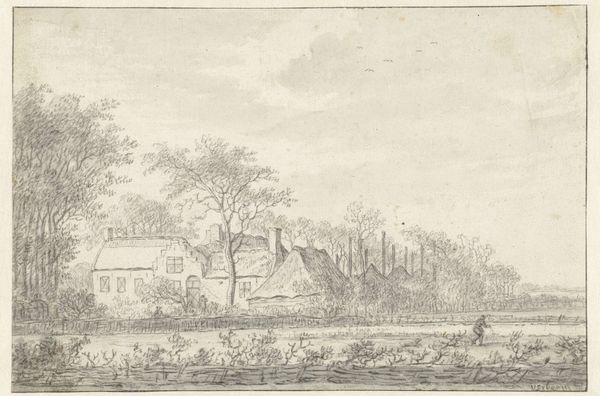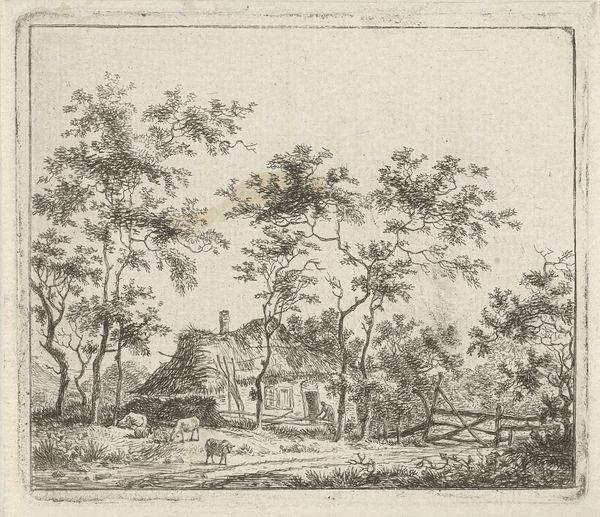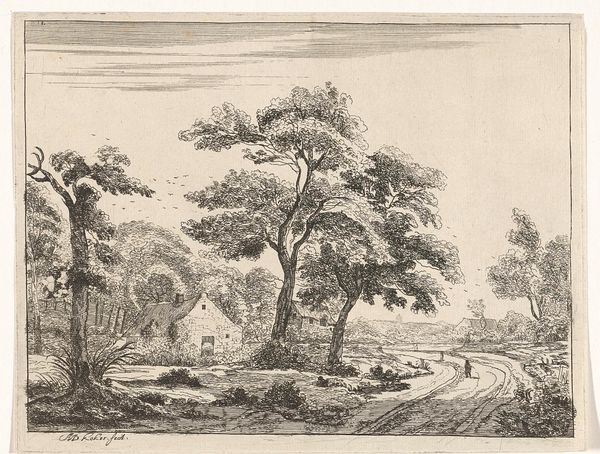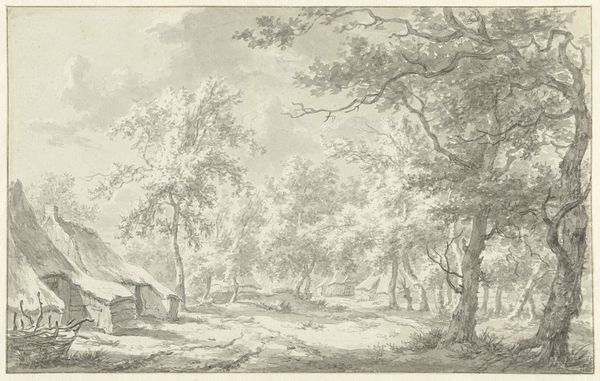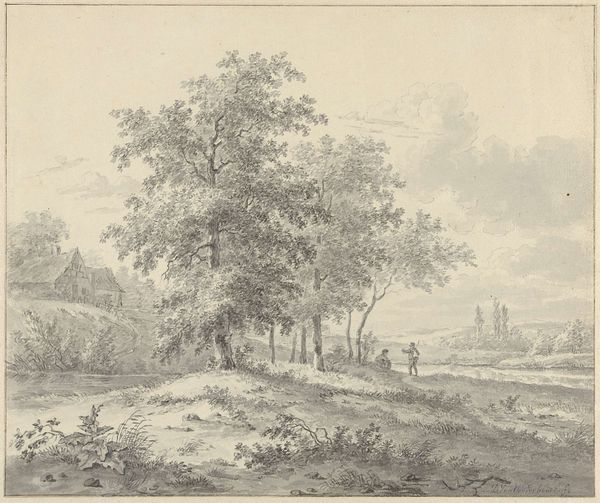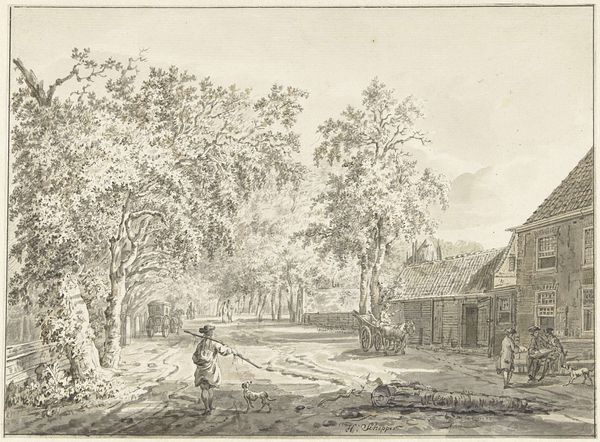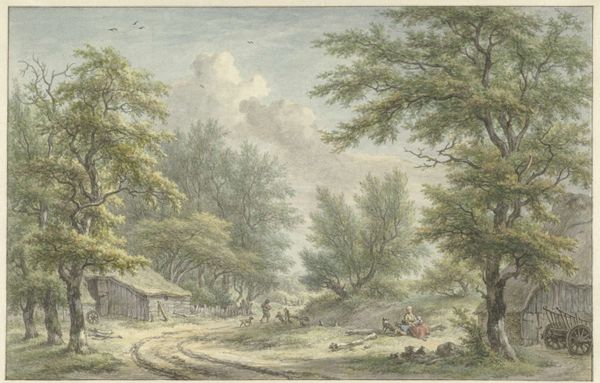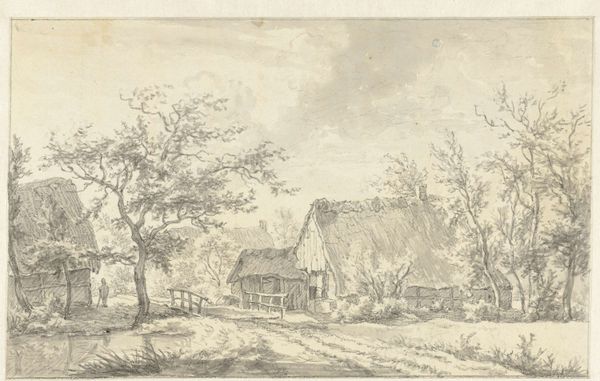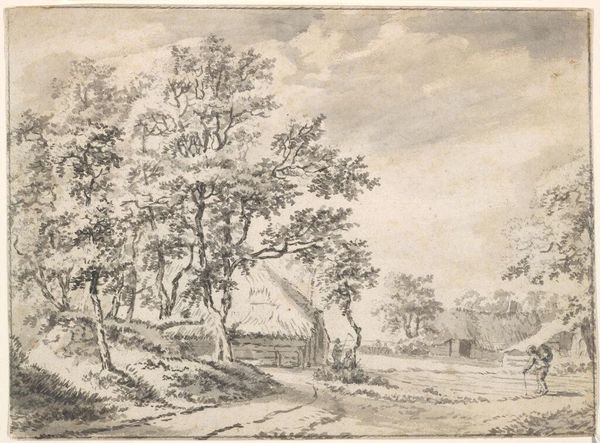
Dimensions: height 250 mm, width 371 mm
Copyright: Rijks Museum: Open Domain
Egbert van Drielst rendered this watercolor of a farmhouse in Eext, Drenthe, sometime in the late 18th or early 19th century. It's a common enough scene, and was for its time: a humble dwelling in a rural landscape. But consider the function of landscapes in Dutch art history. The Dutch Republic emerged in the 17th century from a revolt against the Spanish Empire. Painters sought to define a new national identity, and what better way than through the land itself? The flat, open fields and expansive skies became symbols of Dutch freedom and independence. By Drielst’s time, landscape was a well-established genre, and a crucial part of a national visual culture. But here, the focus is on the individual farm. Perhaps this signals a shift towards valuing the local and the particular. To understand the significance of this image, further research into Dutch agricultural history, regionalism, and the changing role of landscape in Dutch art would be invaluable.
Comments
No comments
Be the first to comment and join the conversation on the ultimate creative platform.
